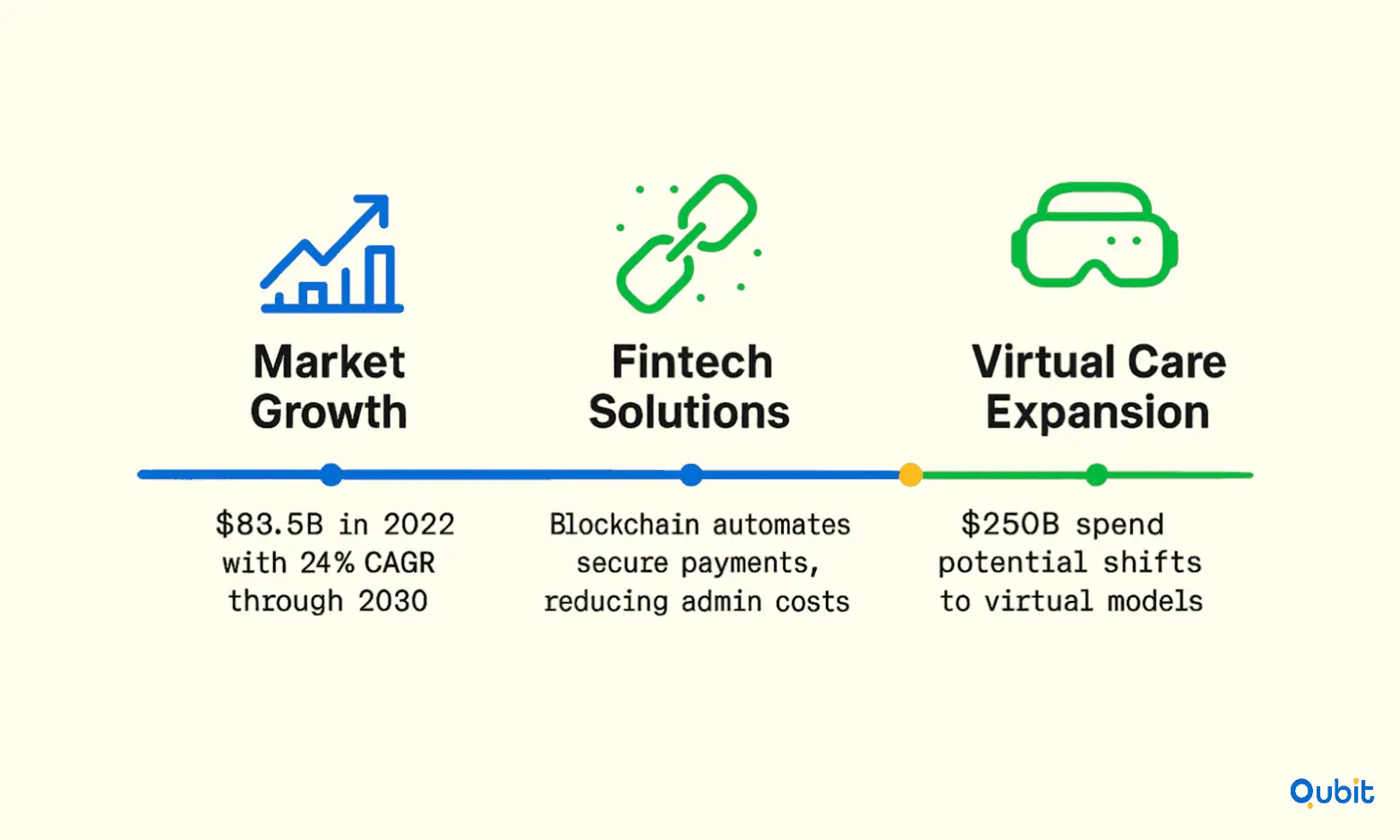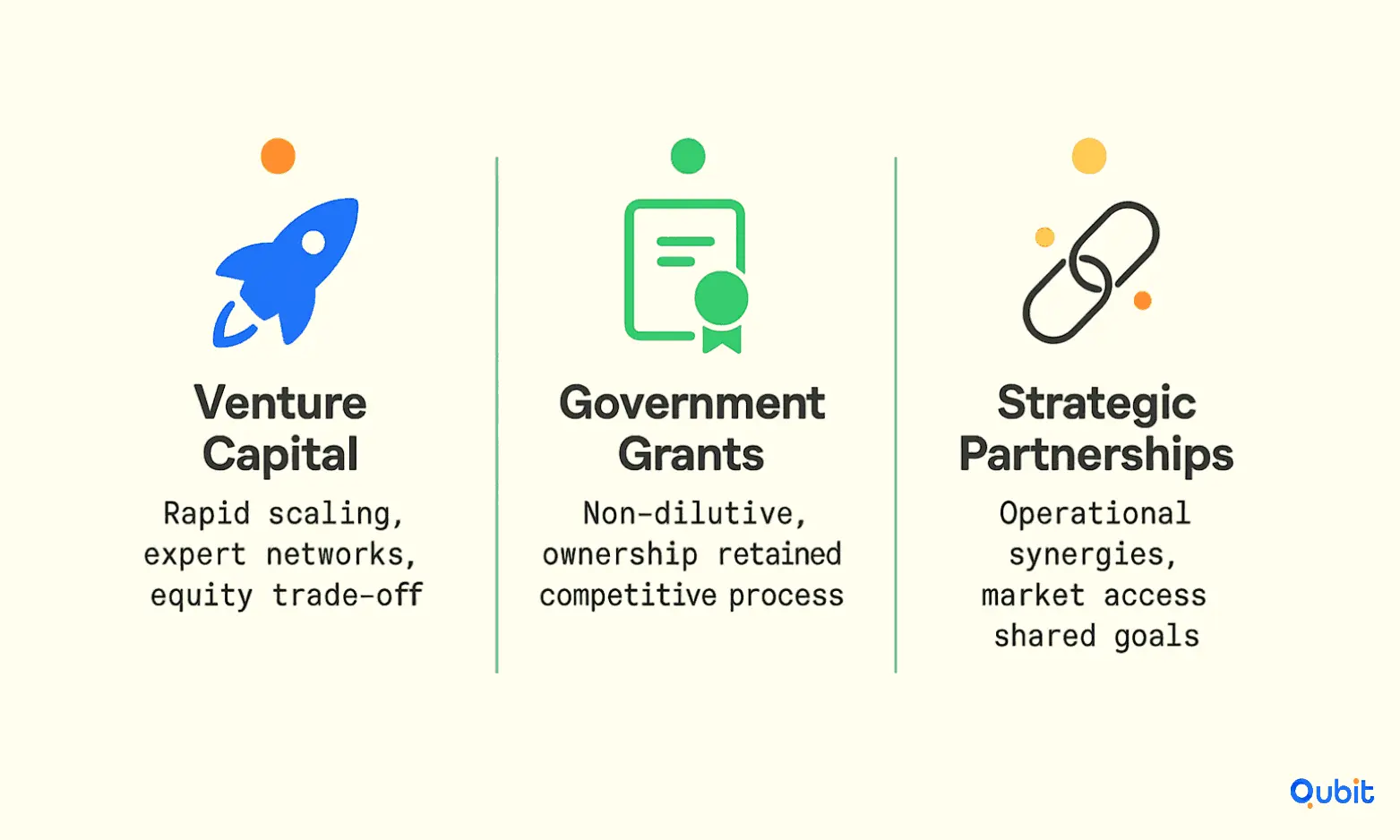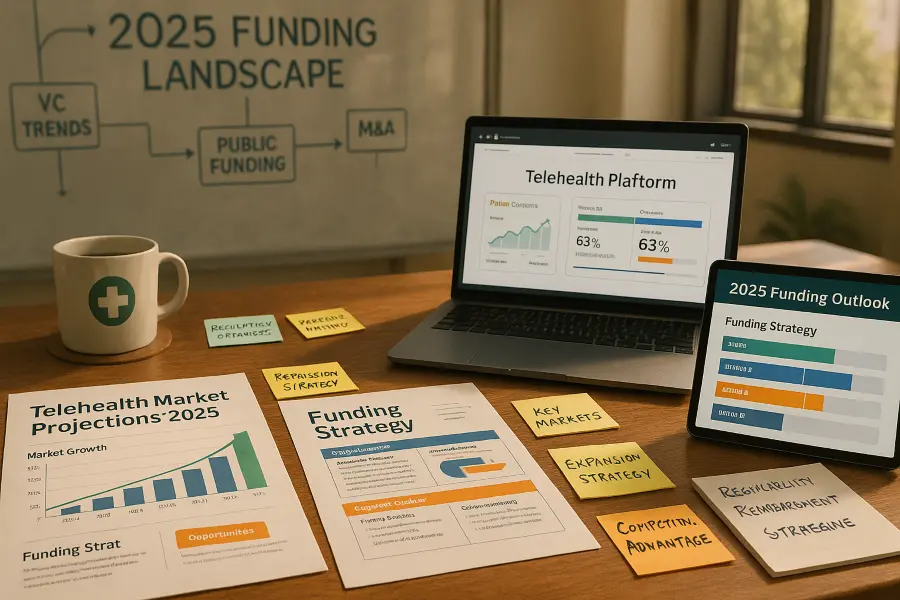The telehealth funding outlook is poised for significant transformation as healthcare systems increasingly embrace digital solutions. With advancements in technology and growing patient demand for remote care, telehealth is becoming a cornerstone of modern healthcare delivery. This evolution is driving substantial investment opportunities, particularly in areas like AI integration and virtual care platforms.
Detailed insights into ai healthcare investment trends contribute to your comprehension of how emerging technologies interface with the evolving telehealth funding landscape. As we approach 2025, understanding these trends will be crucial for stakeholders aiming to capitalize on this dynamic sector.
This blog explores the trajectory of telehealth funding, offering actionable insights and real-world data to help you stay ahead in this rapidly shifting domain.
Telehealth Payment Innovations & Digital Transformations
The rapid adoption of telehealth during the pandemic has unlocked opportunities for hybrid care models, but funding challenges remain a critical focus. Innovative payment solutions are reshaping the telehealth funding outlook, with fintech integrations leading the charge. The global telehealth market, valued at $83.5 billion in 2022, is projected to grow at an impressive 24% CAGR from 2023 to 2030, signaling robust future potential.

Fintech advancements are addressing key pain points in telehealth, such as high consumer bills and administrative inefficiencies. For instance, permissioned blockchains are enabling secure, automated reimbursements by facilitating machine-to-machine payments. This is particularly impactful in chronic care management, where the Internet of Medical Things (IoMT) supports remote monitoring and real-time claims processing.
Moreover, the virtualization of healthcare spending is gaining momentum, with an estimated $250 billion of the U.S. healthcare spend having the potential to shift to virtual care. Emerging technologies like cryptocurrency and virtual reality (VR) therapy are also creating new revenue streams. These innovations not only enhance patient care but also enable monetization through anonymized data and immersive treatment experiences.
For a deeper understanding of diverse capital strategies in healthcare, check out how to secure funding for healthcare startups. This resource provides valuable insights into navigating the complexities of healthcare funding.
As telehealth continues to evolve, the integration of fintech solutions will play a pivotal role in driving accessibility, efficiency, and innovation across the sector.
Care at Your Digital Front Door
A unified digital portal is transforming telehealth by simplifying access to diverse healthcare services. Through an integrated app-based platform, patients can seamlessly connect with primary care providers, specialists, behavioral health professionals, and pharmacy services, all within a single interface. This consolidation eliminates the need for multiple apps or fragmented systems, creating a streamlined experience that enhances both accessibility and engagement.
Evernorth Health Services exemplifies this approach with its Digital Front Door, an app-based portal that integrates scheduling, prescriptions, and consultations into one cohesive platform. This innovation ensures patients can manage their healthcare needs efficiently, whether booking appointments, refilling medications, or accessing mental health support.
Current State of Telehealth Funding
The telehealth industry is experiencing unprecedented growth, driven by robust funding trends and market demand. Projections indicate the global telehealth market will soar to $180.86 billion by 2030, with North America accounting for nearly 48% of this share. This growth reflects the increasing adoption of virtual healthcare solutions across diverse demographics and geographies.
In the United States, the telehealth market is set to expand from $48.37 billion in 2023 to an astounding $467.80 billion by 2034. Such exponential growth underscores the sector's potential to redefine healthcare delivery. Investors are responding to this momentum by shifting focus toward seed and pre-seed funding rounds, enabling startups to innovate and scale rapidly.
Government support is also playing a pivotal role in bridging funding gaps. Grants and subsidies are being allocated to bolster telehealth infrastructure, ensuring equitable access to virtual care. This trend aligns with broader efforts to enhance health data interoperability funding, which facilitates seamless information exchange—a critical factor for telehealth's success. For more insights on how data fluidity influences investment opportunities, explore health data interoperability funding.
As the telehealth funding outlook remains strong, stakeholders are encouraged to capitalize on emerging opportunities. Whether through private investments or public initiatives, the sector is poised for transformative advancements that will shape the future of healthcare.
Key Funding and Innovation Trends
Essential Steps to Secure Funding
Securing funding is a pivotal milestone for telehealth startups, and it requires a well-structured approach. To capitalize on the growing telehealth funding outlook, startups must focus on three critical areas: crafting a comprehensive business plan, preparing realistic financial projections, and developing a pitch deck that resonates with investors.
1. Build a Robust Business Plan
A strong business plan serves as the foundation for attracting investors. It should clearly outline your startup's mission, target market, competitive analysis, and growth strategy. Investors are particularly interested in understanding how your telehealth solution addresses a specific pain point in the healthcare industry. Including detailed market research and a clear value proposition can significantly enhance your credibility. For additional insights, explore how digital health investment trends demonstrate the connection between technological advancements and shifts in telehealth financing.
2. Prepare Realistic Financial Projections
Accurate and realistic financial projections are essential to gaining investor trust. These projections should include revenue forecasts, cost breakdowns, and anticipated profit margins. A thorough cost analysis not only demonstrates your financial acumen but also reassures investors about the viability of your business model. Be prepared to justify your numbers with data and explain how you plan to achieve your financial goals.
3. Craft a Compelling Pitch Deck
Your pitch deck is your opportunity to make a lasting impression. It should be visually engaging and concise, highlighting key aspects of your business plan and financial projections. Focus on storytelling to connect with investors emotionally while presenting data to back up your claims. A compelling pitch deck can significantly enhance investor confidence and set your startup apart from competitors.
By focusing on these essential steps, telehealth startups can position themselves as attractive investment opportunities. A well-prepared business plan, coupled with realistic financial projections and a persuasive pitch deck, can make all the difference in securing the funding needed to bring innovative healthcare solutions to life.
Choosing the Right Funding Sources
Securing the right funding is a critical step for telehealth startups aiming to scale their operations and innovate effectively. The telehealth funding outlook offers a variety of options, each with unique advantages and challenges. Understanding these options can help startups align their financial strategies with long-term goals.

Venture Capital: Fueling Rapid Growth
Venture capital (VC) remains a dominant funding source for telehealth startups. With its focus on high-growth potential, VC funding provides not only substantial financial backing but also access to industry expertise and networks. However, it often comes with equity dilution, meaning founders must weigh the trade-off between financial support and ownership control. For startups aiming to expand quickly and capture market share, VC funding can be a powerful catalyst.
Government Grants: Non-Dilutive Support
Government grants offer an attractive alternative for startups seeking non-dilutive funding. These grants are particularly appealing because they do not require equity exchange, allowing founders to retain full ownership. Additionally, many grants are tailored to healthcare innovation, making them a natural fit for telehealth initiatives. However, the application process can be competitive and time-intensive, requiring startups to demonstrate clear alignment with public health objectives.
Strategic Partnerships: Beyond Financial Backing
Strategic partnerships provide a unique blend of funding and operational synergies. Collaborating with established healthcare providers, technology firms, or insurance companies can unlock resources such as infrastructure, expertise, and market access. These partnerships often align with shared goals, creating mutually beneficial outcomes. While they may not always involve direct financial investment, the operational advantages can significantly reduce costs and accelerate growth.
Aligning Funding with Long-Term Goals
Choosing the right funding source depends on a startup’s specific needs and vision. Venture capital is ideal for rapid scaling, government grants offer financial relief without ownership loss, and strategic partnerships provide both funding and operational leverage. Together, these options form a robust framework for navigating the evolving telehealth funding outlook.
Smart Ways to Scale Operations
Scaling telehealth operations requires a thoughtful balance of technology and human resources. Investing in a robust technology infrastructure is a cornerstone of operational excellence, ensuring seamless service delivery and scalability. This approach not only enhances efficiency but also strengthens the telehealth funding outlook by demonstrating a commitment to sustainable growth.
1. Build a Scalable Technology Framework
A strong technology foundation is essential for handling increased demand without compromising service quality. Cloud-based platforms, for instance, allow telehealth providers to expand capacity dynamically while maintaining data security and compliance. Additionally, integrating AI-driven tools can streamline appointment scheduling, patient monitoring, and data analysis, reducing the burden on human resources.
2. Expand Teams Strategically
Scaling operations isn’t just about hiring more people—it’s about hiring the right people at the right time. Prioritize roles that directly impact patient care and operational efficiency, such as telehealth coordinators and IT specialists. Structured onboarding and ongoing training programs ensure that new hires align with the company’s goals and maintain high service standards.
3. Foster Investor Confidence
A well-executed scaling strategy signals long-term viability to investors. Demonstrating the ability to manage growth sustainably, through both technological upgrades and methodical team expansion, can attract funding and partnerships. This is particularly crucial in a competitive market where scalability often determines success.
By focusing on these strategic areas, telehealth providers can position themselves for sustainable growth while maintaining the trust of both patients and investors.
Funding Challenges and Opportunities
- Policy instability in the US is causing some investors to be cautious, especially regarding long-term bets on reimbursement-dependent business models.
- Technology-driven startups—especially those with robust AI and RPM capabilities—are best positioned to attract funding, as they address both clinical and operational pain points.
- Mental health, chronic care, and hospital-at-home models are attracting outsized investment due to their scalability and demonstrated outcomes
Conclusion
Telehealth funding in 2025 is marked by strong investor interest, especially in AI, RPM, and hybrid care models. However, regulatory uncertainty and reimbursement variability remain key challenges. Startups that can demonstrate technological differentiation, clinical impact, and adaptability to the evolving policy landscape are most likely to secure capital and drive the next phase of telehealth innovation.
If you’re ready to explore fundraising assistance services. Qubit Capital’s funding experts are here to guide you through this dynamic environment and accelerate your journey towards innovation.
Key Takeaways
- Telehealth funding is driven by robust market growth and innovative payment technologies.
- Rising government grants and non-dilutive capital options diversify funding sources.
- Effective business planning, financial projections, and pitch decks are critical to securing funding.
- Strategic partnerships and scalable operational models are essential for sustainable growth.
- Data-driven insights reveal significant market potential through 2025 and beyond.
Frequently asked Questions
What is the current funding outlook for telehealth?
Telehealth funding remains robust, with significant growth projected globally. Both public and private investments are driving this expansion, alongside innovative payment models that continue to evolve.


 Back
Back



